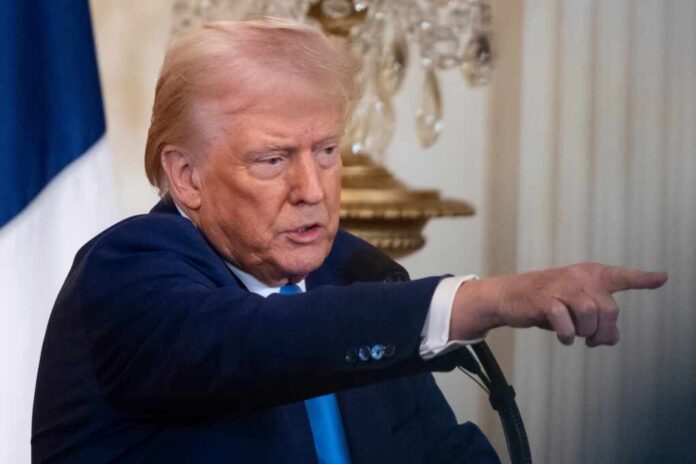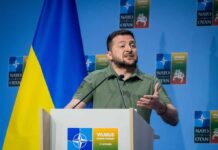
If there’s one thing President Trump knows, it’s how to keep the world on its toes with his “Peace Through Strength” doctrine.
At a Glance
- Trump’s strategy combines military readiness with diplomatic efforts.
- Emphasis on selective military actions in global hotspots.
- Criticized for perceived concessions to Russia in Ukraine.
- Aimed at maintaining U.S. interests without prolonged wars.
Balancing Diplomacy and Defense
President Trump’s “Peace Through Strength” policy emphasizes strategic military readiness paired with selective diplomatic efforts to address world conflicts. His administration has sought to negotiate the end of Russia’s military ambitions in Ukraine, despite hesitations about directly confronting Moscow’s intentions. The approach is a calculated mix of strategic military absence and calculated diplomatic presence, aiming to uphold U.S. interests globally while avoiding drawn-out military entanglements.
Watch a report: Assessing Trump’s Peace Through Strength Speech
There’s an undeniable boldness to Trump’s stance, clearly outlined as he supports allies against adversaries, but doesn’t shy away from withholding aid to pressure negotiations. This tactic has come under scrutiny, with some seeing it as a reluctance to fully stand against aggression, especially evident with his handling of the Russia-Ukraine conflict. However, Trump’s National Security Strategy reiterates core American interests, reflecting his focus on safety and prosperity.
Nick Adams on X: “Crimea River: President Trump is Ukraine and Russia’s Only Hope for Peace” / X
— Nick Adams (@NickAdamsinUSA) April 28, 2025
Controversial Tactics and Strategies
Redirection of counter-drone missiles meant for Ukraine reflects Trump’s complex approach, suggesting that his moves to support other regions, like Israel and Gaza, could inadvertently encourage Russian aggression by weakening Ukraine. Former Russian President Dmitri Medvedev claims Moscow seeks victory, not peace, in Ukraine. Trump’s rhetoric often equates the warring nations, enabling criticism that he dismisses Russian aggressions. His delayed action on aligning with the Senate’s sanctions against Russia echoes this perceived hesitancy.
Despite bipartisan support for strong sanctions, Trump’s delay raises questions about his resolve to enforce these measures. Critics argue his inaction can embolden Russia, leading them to believe U.S. detachment is inevitable. Trump counters this by emphasizing strategic flexibility, where support signals leverage rather than commitment.
@amuse on X: “The Trump Doctrine Offers a Smarter Path to Global Stability” / X
— @amuse (@amuse) May 20, 2025
A Doctrine Summarized
Trump’s foreign policy exemplifies “Peace Through Strength” by supporting allies like Israel, engaging in peace talks with adversaries, and utilizing military strikes on entities such as Iranian nuclear facilities. His decisions—though debated—underscore the strategic mindset aiming for peace without prolonged conflict. By using conditional support and national security strategies, he positions America as a crucial peacekeeper while prioritizing its interests and global stability.
“Our government’s first duty is to its people, to our citizens — to serve their needs, to ensure their safety, to preserve their rights, and to defend their values.” – President Donald J. Trump
The challenges inherent in Trump’s “Peace Through Strength” strategy highlight a balance between maintaining power and fostering global peace. His decisions—often a point of contention—elevate the conversation around America’s role as a global leader. As the world scrutinizes his approach, Trump remains committed to what’s increasingly the unique art of wielding power for peace.

























